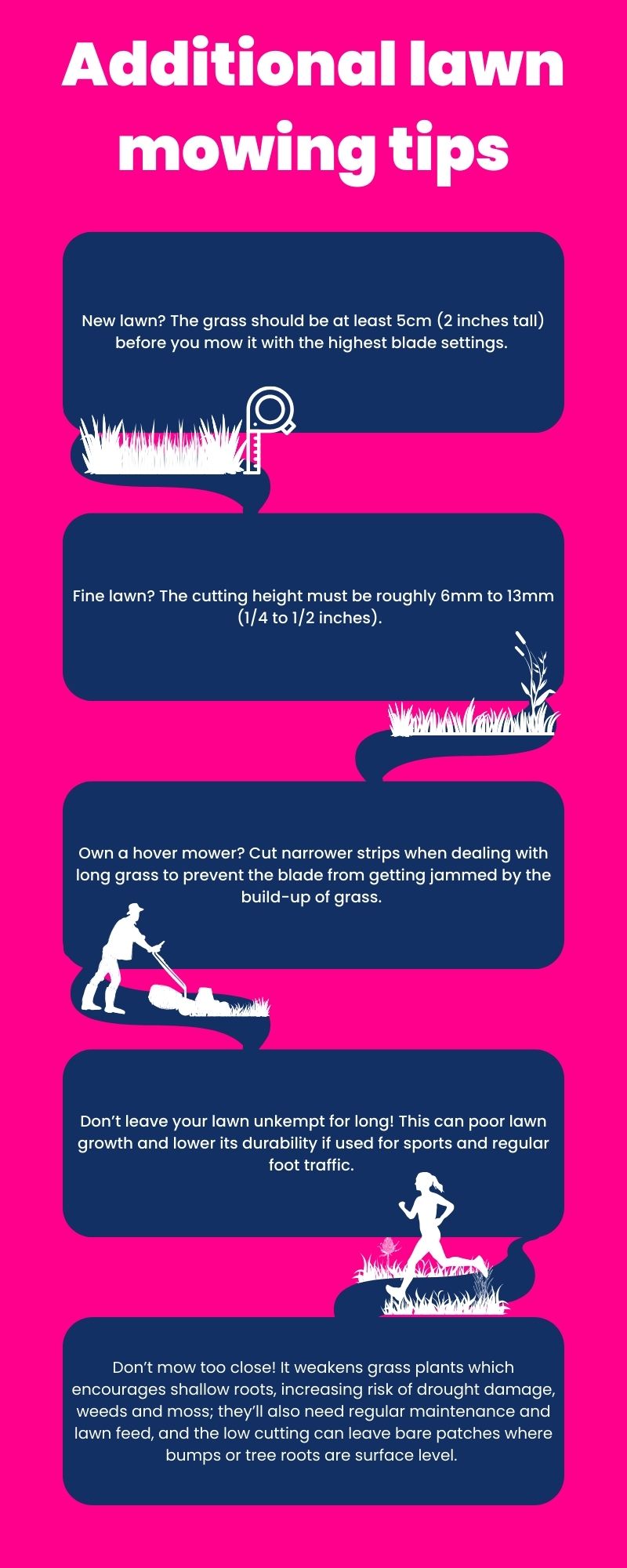Lawn care is crucial regardless of if your garden turf is old or new. One of the most obvious reasons is that grass is exposed to the elements constantly, which means it takes quite the punch from different weather. From cold and heavy downpours to sweltering summers, your lawn deals with plenty of climate changes and thanks to those variations in weather, you need to be on hand to provide it with some essential TLC in order for your lawn to thrive.
This point is where our guide comes in. Here we’ve noted down some helpful ways to deal with lawn care, ensuring you know how to take care of your lawn for a better, more pleasant garden aesthetic.
Table of contents
- Lawn care – the basics
- How to fix compacted soil in a garden
- How to fix your lawn’s edge
- How to feed your lawn
- How to repair patches in a lawn
- How to get rid of moss in a lawn
Lawn care – the basics
Many homeowners are familiar with these, but if you’re new to owning a garden or simply need a refresher, you’re in the right place.
When to mow the lawn
Lawn mowing is the go-to for basic turf maintenance. It helps the roots of the grass spread, ensuring gaps are filled, and weeds are blocked out. Now, different seasons will affect how often you can mow the lawn. So, here’s a breakdown of the timings.
Note: Ensure you maintain your mower well and keep the blades sharp for efficient cutting.
Summer lawn care
You should mow your lawn at least once a week during this season with a cutting height of around 13mm to 25mm (1/2 to 1 inch). The raised cutting height will help prevent the grass from turning brown in dry weather.
Spring, autumn and winter lawn care
Mowing your lawn at least once every two weeks is advised during these seasons. While we refer to winter, this section is better suited for spring and autumn because, let’s be honest, not much gardening gets done in a UK winter! With that said, where warmer temperatures allow, it is possible to care for your lawn during this season. A cutting height of up to 40mm (1 1/2 inches) is advised during this time for domestic lawns.
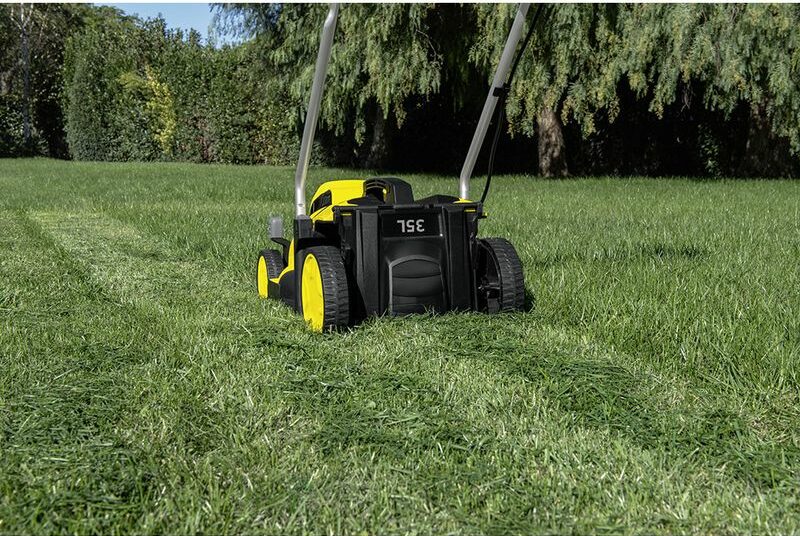
When to water the lawn
New lawns are best suited to regular sprinkling but avoid excessive watering or flooding of the area. Doing so causes shallow roots and poor growth.
The best way to water your garden is using rainwater which can be collected using a water butt. You can also use grey water from your bathtub or a washing-up bowl.
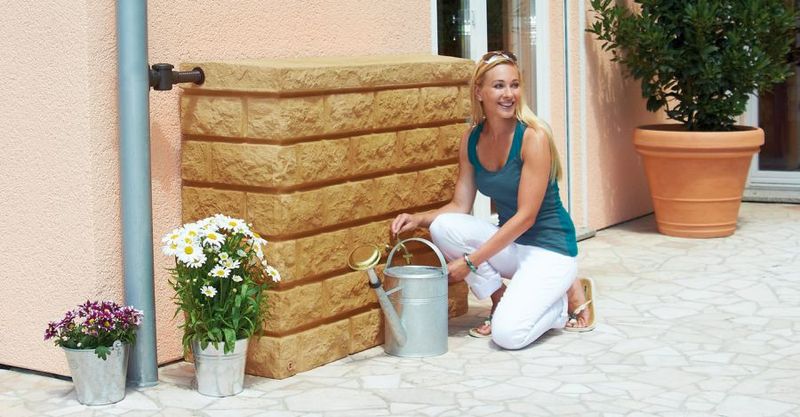
Another way of hydrating your lawn is the use of sprinklers. These are easy and exceptionally useful for getting even coverage. You can also use a timer function on some tap adapters so that you can set the sprinkler up and leave it to do its thing.

If you have an existing lawn and it turns brown, worry not. It’s not dead and is likely to turn green when rain comes down.
When should you weed your lawn?
Nickelback once said, “We got weeds in the backyard four feet tall”, which sounds like an absolute nightmare! They should remove those pronto. Luckily, we’ve got advice to help them and you out.
Weeds are an absolute nuisance for any dedicated garden owner. What’s more annoying is each one needs different removal methods because some are more stubborn than others. So, here’s a breakdown of some of the common weeds you can find in your backyard and how to deal with them.
| Weed | Removal method |
| Dandelions | •Hand trowel. •Hand fork. •Daisy grubber. •Weed puller (ideal if you struggle with kneeling and bending). |
| Buttercups | •Raking then mowing. •Leaving the mower to lift them into the system blades (weakening and killing the weed in time). |
| Clovers | •Raking then mowing. •Leaving the mower to lift them into the system blades (weakening and killing the weed in time). |
| Daisies | •Hand fork. |
| Plantains | •Hand fork. |
| Speedwells | •Raking then mowing. |
| Silverweed | •Raking then mowing. |
| Sorrels | •Raking then mowing. •(In winter) Applying garden lime to acidic soils. |
| Field woodrush | •(In winter) Applying garden lime to acidic soils. |
Whatever you do, try your best not to run straight for the chemical weed killer. Not only are they less cost-effective, but they don’t tackle the underlying problem affecting the health of the grass, which can unintentionally cause the weeds to keep growing.
If you do insist on using weed killer, homemade solutions are possible.
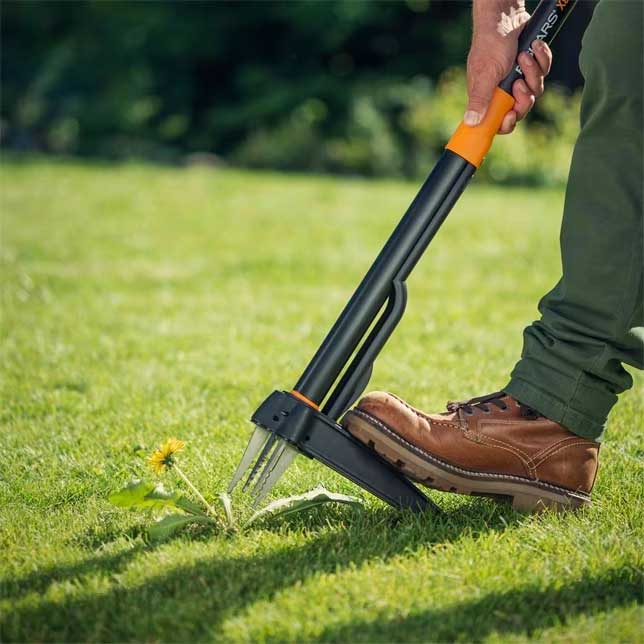
That’s it for the basics! Now, let’s move on to the more intermediate tasks.
How to fix compacted soil in a garden
If you’re wondering why compacted soil is a problem, we’ve got the answer…
Compacted soil stops your grass from growing as effectively as it should. This leads to patches appearing in the summer and causing pools of water or mud baths in heavy rain or the winter season. Luckily, you can deal with this yourself. All you need is a garden fork that can reach 10cm deep into the soil.
When you’re ready to do so, push the prongs at least 10cm deep into the soil of the affected area. Gently rock the fork handle back and forth to open the soil and create breathing room for the roots. This will be important for encouraging grass regrowth.
If you are dealing with heavy ground like clay soil, there are ways to deal with this and prevent the soil from compacting further. A primary way is to use a brush to put sharp sand or fine horticultural grit into the holes created by the prongs. This will also help improve soil drainage.
How to fix your lawn’s edge
Over time, the appearance of a lawn’s edge can become chaotic if it’s not looked after. Edging your lawn results in a tidy and visually appealing appearance, stopping it from growing beyond the desired borders.
One of the simplest ways to clean up your borders is using lawn edging shears. The best way to use these is using your non-dominant hand to steady the tool and your dominant hand to start cutting.
Now, if the grass has grown into the border, you can use a spade or half-moon edger to reshape it, which will help create a shallow ‘moat’. Make sure the blade of your tool is sharp to help cut into the surface. Using a plank to help keep a straight line can help you avoid creating a wonky edge.
Alternatively, you can install permanent edging that can prevent the grass from crossing the border.
How to feed your lawn
You may not know it, but your grass needs nutrients like any other plant, and good fertiliser can do wonders. Organic fertiliser is a favourite for aiding the lawn’s health in the long term, unlike chemical types.
Fertiliser should be applied when rain is forecast, as the rain will help wash it down to feed the roots and prevent it from burning the blades of grass. If rain doesn’t fall as expected, use a hose or watering can on the feed.
The time taken for a lawn to look greener can be up to a week or more, with spring and the middle of summer being prime times to feed the grass. You can find lawn feed for specific times of the year, which helps tackle the concern over when it is appropriate for use.
For example, spring lawn feed that is high in nitrogen is more suitable for that season. It’s a swift fix and helps improve the resistance of your lawn against weeds. However, do not apply spring lawn feed when frost is a risk because it encourages soft growth and is not a durable solution.
It’s also important not to use spring lawn feed in autumn. Opt for an autumn feed high in potassium, instead, to help encourage the roots to form. It will also improve the durability of the lawn and its resistance against frost damage.
How to repair patches in a lawn
Sometimes lawns may not grow as expected, leading to bare patches which can make the lawn look unkempt. If this is an issue, you can easily remedy it by using grass seed, starting with raking the soil (using a hand fork if the patch is small) and sowing the product across the bare batch. Check out our guides to find out how to sow grass seed and the length of time it can take grass seed to grow.
You can also apply potting compost if the soil is lacking in quality.
It’s also wise not to use a fine bowling green seed mixture as it’s not typically suited to backyard lawns. Instead, you should get one with dwarf ryegrasses in the packaging to sprinkle across the bare patch. A tip is to apply wire netting across the top of the new patch to prevent cats or birds from messing with the product.
Another way to replenish the area is by using unused turf. Here are some steps to guide you.
Note: If reshaping the lawn, make sure the strips are put together at 5cm apart in a compost-filled seed tray to grow outside or in a cold frame.
You can find out more about how to make compost in our dedicated guide.
Step one: Mark the area you want to patch
Using a suitable landscape-cutting tool, mark where you need to replace the bare patch. This could be a square or rectangle (depending on the size of the issue).
Step two: Dig up the marked area
Using a hand trowel or hand fork on the small space, dig the soil up to the depth needed to apply the new strip of turf.
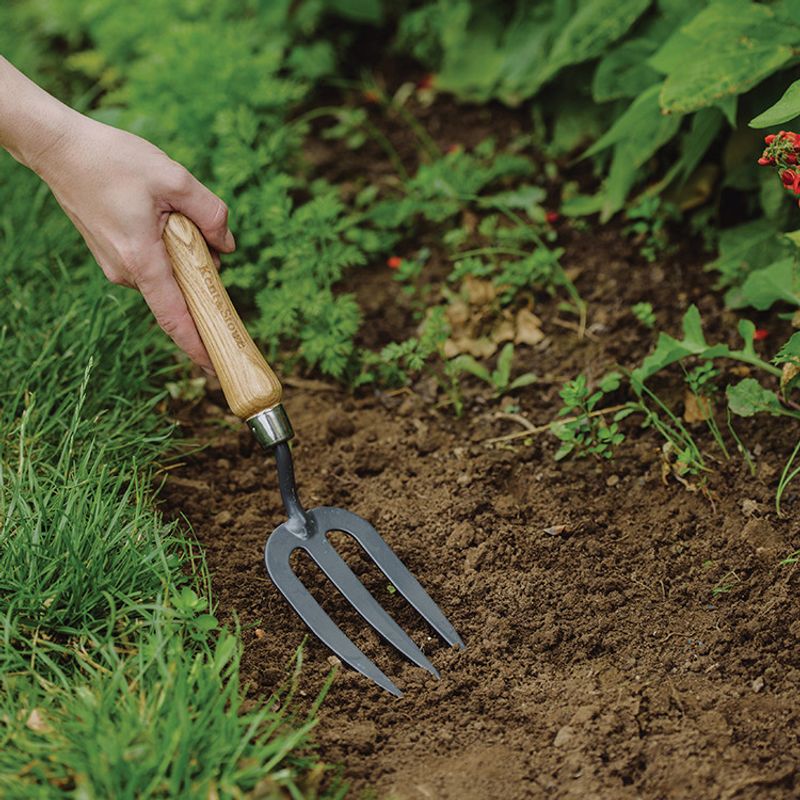
Step three: Add the new turf
The turf, cut to size, can be laid down carefully in the new patch and firmly put down to ensure there are no gaps and that it’s level with the existing lawn.
You’ve done it! The patch should now be gone. Simple right?
How to get rid of moss in a lawn
Before you ask, no, moss isn’t a weed and not a must-remove product. It can be plenty useful for the biodiversity of your lawn, thriving in areas where damp or poor drainage occurs. That being said, moss isn’t for everyone, which is why methods have been found to remove it.
You can remove moss without using chemicals, which is honestly more friendly for your lawn. Specifically, this includes raking or scarifying (weakening) the coating of a seed to prevent germination.
Also, if you have artificial grass, we’ve got a guide dedicated to that subject to save you time scouring pages and pages of information.
Need more information about lawns or other landscaping products and projects? We’ve got you covered with our array of Help and Advice guidance. Look around to learn more about your favourite landscaping topics and explore our range of products to create a space that suits you.


